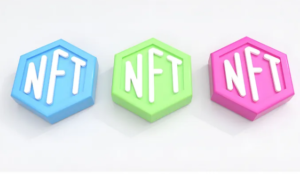Understanding NFTs and why they matter in the digital economy, NFTs have recently gained considerable
momentum in the world of digital art and collectibles. Creating unique ownership over digital items in ways that physical art could never be is what these non-fungible tokens are all about. People seem to be in the dark as to what really constitutes an NFT and why recently they would gain such global attention.
It is very important first to recognize that NFTs are digital assets stored on a blockchain. This technology makes any particular NFT unique and impossible to copy, opening up an entirely new market for artists, collectors, and investors alike.
For and against, much debate has been center stage with the rise of NFTs and their impact-first and foremost, the art world, but by no means limited to it. They can completely change the way people think about ownership and value in the digital age. The more people and brands dive into this space, the more it becomes apparent: NFTs are way more than just a fad.
Key Takeaways
- NFTs are a class of digital assets that represent ownership of items.
- They apply blockchain technology that assists them in maintaining the product’s authenticity.
- The popularity of non-fungible tokens in large amounts is surely going to reshape industries such as art and entertainment.
What is an NFT?
Non-Fungible tokens are unique digital assets by nature. They use blockchain technology to prove ownership and authenticity. This chapter summarizes what an NFT is, how it works, its types, and its role in the digital ownership of any particular item.
The Non-Fungible Tokens
Unlike normal cryptocurrencies, such as Bitcoin or Ethereum, non-fungible tokens are irreplaceable. No NFT can be taken to replace another. For example, if a person owns a particular kind of NFT in the form of digital artwork, that is absolutely unique and cannot be changed for some other NFT, even of similar value.
NFTs can really be any form of digital good one might imagine: art, music, videos, and even virtual real estate. The uniqueness of NFTs allows them to convey value in ways that traditional digital files cannot.
The Technology Behind NFTs: Blockchain
At the heart of NFTs lies blockchain technology. A blockchain is a secure digital ledger that records all transactions involving NFTs in a way that cannot be altered.
Because of this security, ownership is easily verifiable. When anyone buys an NFT, the transaction gets recorded on the blockchain. Thus, everyone can see who owns the NFT and what history it has.
The most common blockchain on which NFTs would base is Ethereum, though Binance Smart Chain and Flow are used, too. Their decentralized nature keeps fraud at bay and helps in maintaining trust in the ownership of digital assets.
The Scale of NFTs: From Art to Collectibles
NFTs vary in their form and purpose. They could be a piece of digital art, a music album, virtual trading cards, or even an item in some video game.
In such cases, artists are able to sell their work directly to collectors without the help of an intermediary agent. This allows them to retain more of the profit and communicate directly with their audience.
There are also marketplaces for NFTs, where people go to buy and sell these tokens. Some of the most popular ones include OpenSea, Rarible, and Foundation. Each marketplace might focus on something different, whether that is high-end art or the collectibles of gaming.
Ownership and Scarcity in the Digital Space
Ownership of NFTs could be an important link in their value. By owning an NFT, a person can claim to own the original version of a digital item.
Scarcity is one of the most critical elements in the desirability of an NFT. It was, after all, unique; thus, it could give a meaning to scarcity. This might raise demand and therefore its price, particularly for highly sought-after digital goods.
Most creators usually have a cap on the number of NFTs they may be able to produce. This makes sure that value is preserved further, and in a way, it joins the idea of limited edition art.

Also Read :
- The Future of NFTs in Virtual Reality and Augmented Reality
- NFTs for Charity : How Non-Fungible Tokens are Changing Philanthropy
- NFTs Beyond Art: Exploring Utility Tokens and Their Real-World Applications
- NFTs and Real Estate: A Game-Changer for Property Investors
- Exploring the Metaverse: Why NFTs are the New Digital Real Estate
